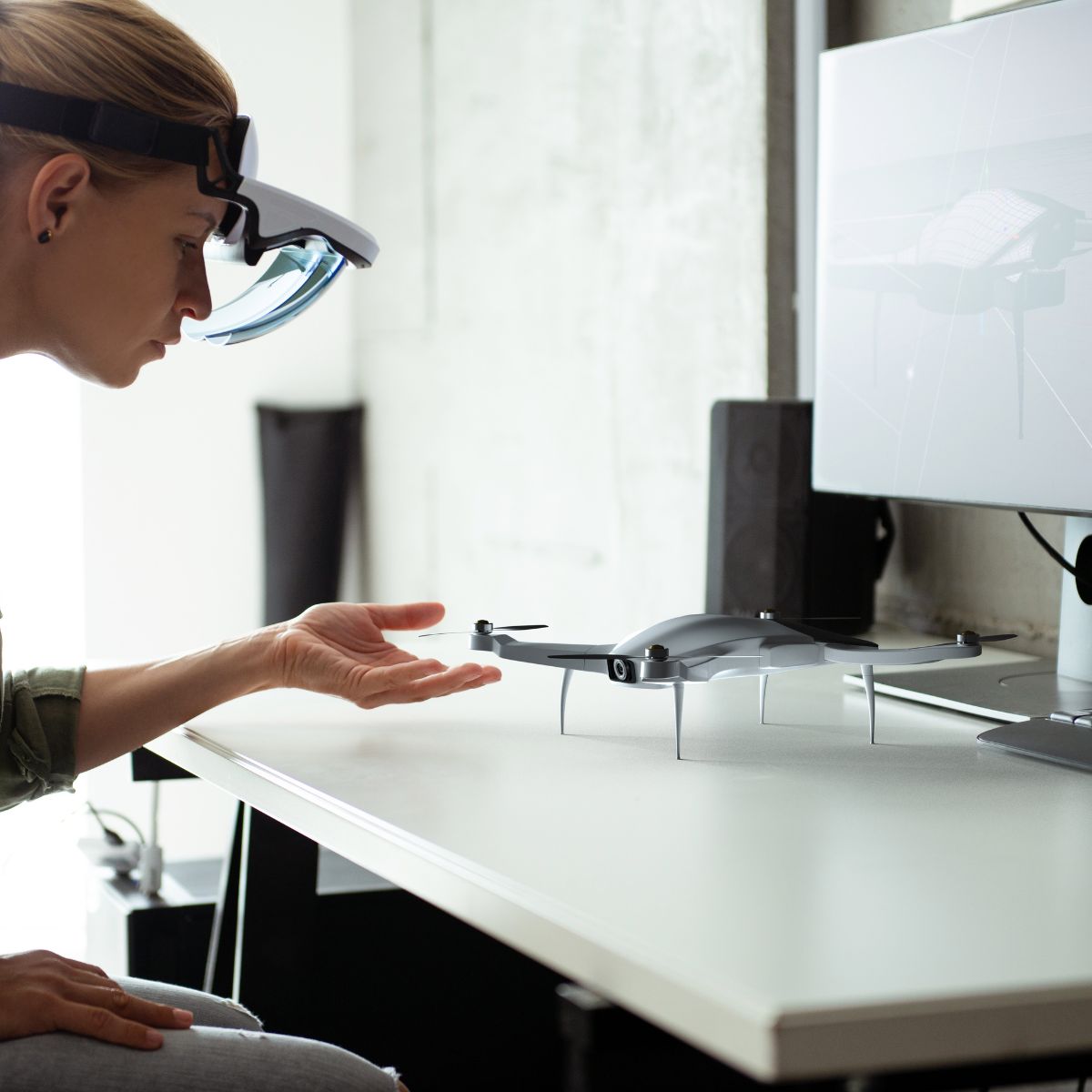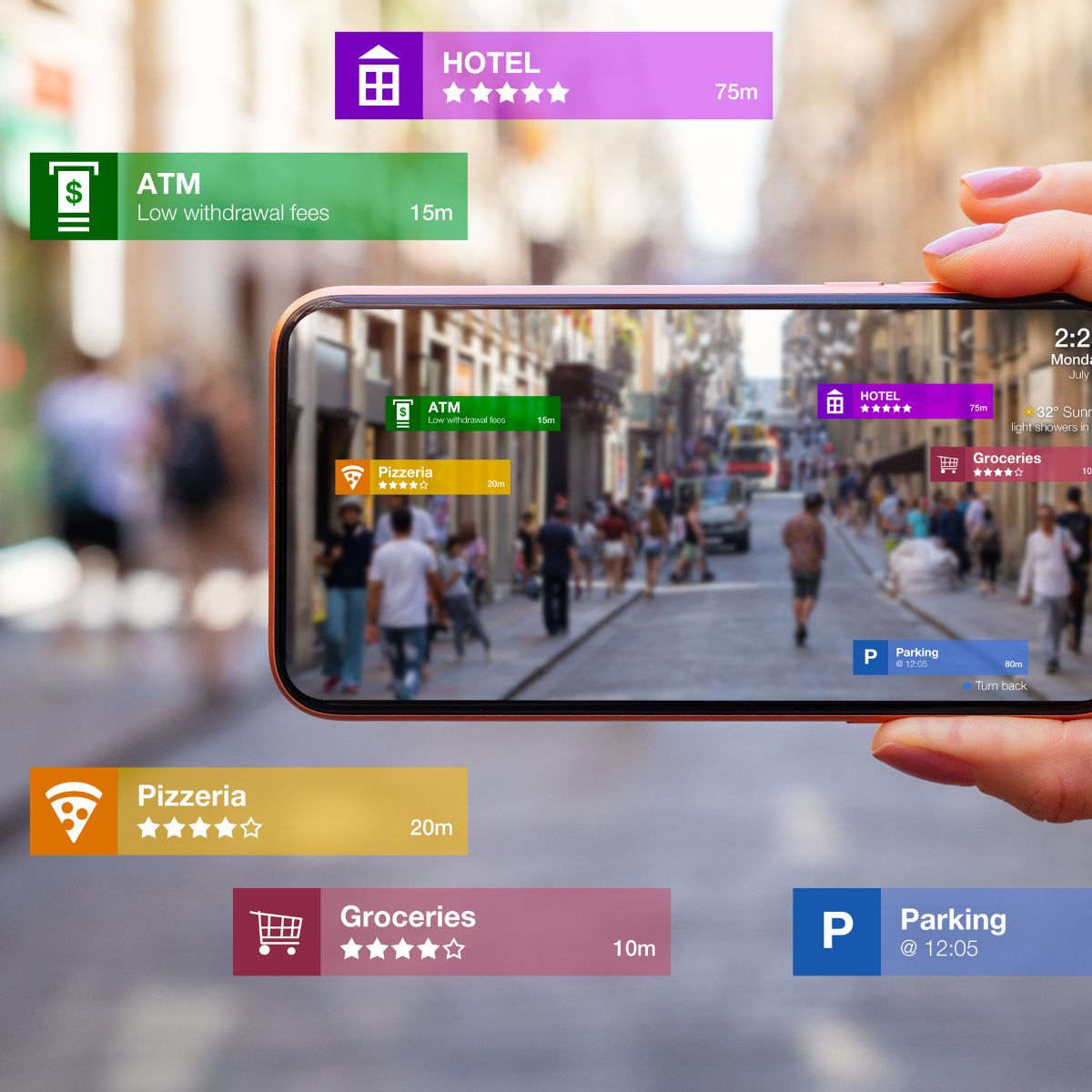In our rapidly evolving digital world, e-commerce has been a game-changer for businesses and consumers alike. However, one hurdle that often disrupts the smooth e-commerce operation is product returns. The impact of returns on businesses is both logistical and financial. Interestingly, technology has once again come to the rescue, this time with Augmented Reality (AR). This incredible technology has an amazing potential to reduce product returns and revolutionize the way we approach online shopping.
 Understanding Augmented Reality (AR) and its Advantages
Understanding Augmented Reality (AR) and its Advantages
Now that we’ve set the stage, let’s delve into the heart of our discussion: Augmented Reality. What exactly is this technological marvel, and how does it add value to e-commerce?
Unraveling Augmented Reality
AR is a technology that superimposes digital information onto the physical world, creating an immersive shopping experience. It allows consumers to interact with virtual objects as if they were real, offering a whole new dimension to the shopping process. This rich, interactive experience aids customers in making informed purchasing decisions, thereby minimizing the chances of product returns.
The Perks of AR in E-commerce
Augmented reality in e-commerce presents multiple benefits. The most compelling advantage is the enhanced product visualization it offers. It enables customers to virtually ‘try before they buy’, from visualizing how a piece of furniture would look in their living room to trying on clothes or accessories. Augmented reality in shopping will have realistic and personalized shopping experiences that boost customer engagement and satisfaction, thereby enhancing brand loyalty and reducing returns.
The Role of AR in Reducing Product Returns
With a basic understanding of the technology under our belt, it’s time to uncover how this innovative technology could be the much-needed solution to the high return rates plaguing the e-commerce industry.
Can AR Reduce E-commerce Returns?
Utilizing AR for shopping, businesses can provide a clearer picture of their products, helping customers understand what they’re purchasing. This mitigates the common issue of customers receiving a product that doesn’t match their expectations, one of the primary reasons behind high return rates in e-commerce.
Exploring 3D Product Configurator
A 3D product configurator is an advanced tool that allows consumers to view products from every angle, customize according to their preferences, and understand the product’s details better before making a purchase. This interactive tool plays a significant role in the AR shopping experience.
For instance, a Shopify product customizer uses a 3D product configurator software to let customers design and visualize their customized product in real-time. This increased product understanding significantly reduces the chances of dissatisfaction and consequent returns.
 The Impact of AR on Customer Satisfaction and Business Efficiency
The Impact of AR on Customer Satisfaction and Business Efficiency
Augmented Reality (AR) has the potential to go beyond just reducing returns and offers numerous benefits in terms of enhancing customer satisfaction and improving business efficiency. One of the key ways augmented reality achieves this is by improving product understanding and customer engagement. Through providing customers with an interactive and immersive experience, AR enables them to have a better understanding of the products they are interested in purchasing. This enhanced understanding leads to more informed buying decisions and ultimately contributes to customer satisfaction.
Furthermore, AR’s interactive nature creates a unique and engaging shopping experience for customers, especially in the realm of e-commerce. The ability to virtually try on clothing or visualize furniture in one’s own space not only increases customer satisfaction but also drives repeat purchases. In fostering customer loyalty through these innovative experiences, businesses can improve their overall efficiency.
In addition to enhancing customer satisfaction, AR for e-commerce also has a positive impact on business efficiency by reducing return rates. When customers have a better understanding of a product through AR, they are less likely to return it due to dissatisfaction or inaccurate expectations. This reduction in returns not only saves businesses the costs associated with logistics and customer service efforts but also frees up resources that can be utilized for other areas of the business. Ultimately, this improved efficiency contributes to a healthier bottom line for companies.
Implementing AR in E-commerce Business Model
Having explored the benefits of AR, you may be wondering how to harness its power for your e-commerce business. Let’s navigate through this journey together in the upcoming section.
Incorporating AR into Your Business Framework
When it comes to implementing augmented reality into an e-commerce platform, it may initially appear to be a challenging endeavor. However, with the right approach, it can be a manageable and rewarding journey. Here’s a practical guide to help you navigate the process successfully.
- Understand Your Audience – The first step is to thoroughly understand your target audience. Take the time to recognize their needs, preferences, and behaviors. By gaining this insight, you can tailor your augmented reality solutions to directly address these specific needs and enhance the overall customer experience.
- Design the AR Experience – The understanding will guide you in designing an augmented reality experience that effectively showcases the aspects of your product that require highlighting. Remember, the primary objective is to provide customers with a comprehensive understanding of the product, ultimately reducing return rates.
- Choose the Right AR Technology – Next, it’s crucial to select the right augmented reality technology for your business. Different enterprises may have varying requirements, necessitating different augmented reality solutions. For instance, a WordPress product configurator might be the ideal choice for some, while others may benefit from alternative product customizer software. Carefully assess your business’s unique needs and select the AR technology that aligns best with your goals and capabilities.
- Test and Refine – Once you’ve chosen an AR solution, it’s essential to thoroughly test and refine it before a full-scale launch. Conduct extensive testing to ensure the augmented reality experience is seamless, intuitive, and delivers on its intended purpose. Collect valuable feedback from users and incorporate those insights into refining the augmented reality solution further. This iterative process will help you address any issues, improve the user experience, and ensure that your AR implementation is successful.
Through following this guide, you can confidently embark on your AR journey, harnessing the power of this technology to enhance customer experiences, reduce returns, and propel your e-commerce business forward.
 Navigating Challenges in AR Adoption
Navigating Challenges in AR Adoption
Like any new technology adoption, integrating AR into your business may present some challenges. These could range from technical difficulties to user adoption hurdles. However, with a robust change management strategy and continuous refinement based on feedback, these challenges can be effectively managed.
Augmented Reality is transforming the e-commerce landscape, mitigating the age-old problem of product returns by offering customers an interactive and immersive shopping experience. It enhances product understanding, boosts customer engagement, and eventually leads to improved customer satisfaction and business efficiency. The potential of AR for e-commerce is enormous and is set to redefine the online shopping experience.